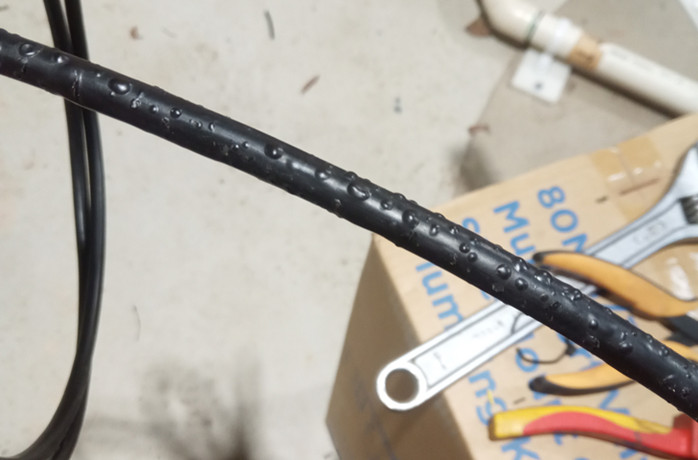The Impact of Chloride on Polyethylene Products
Background
A recent customer inquiry has highlighted potential issues related to chloride-induced corrosion in polyethylene (PE) environments, specifically concerning sensor cables. The customer provided detailed feedback about their setup and the problems encountered.
Customer Feedback
The customer reported using a sensor connected by a 2-meter long PE cable. This sensor is placed in a tank filled with borehole water, where pool chlorine tablets are used to assist in disinfection. Notably, the most severe cable degradation, characterized by bubbling, occurs about 1 meter from the sensor. This section appears to be the area exposed to the medium for the longest duration.

Analysis
Polyethylene (PE) is a widely used plastic material known for its corrosion resistance and low cost. It is common in water pipes, drainage systems, cables and various other fields. However, despite its numerous advantages, PE products are susceptible to damage under certain environmental conditions, particularly due to the presence of chloride ions.
What are Chloride Ions?
Chloride ions are negatively charged chlorine atoms and are among the most common anions found in salts. They are common in nature, present in seawater, soil, and even drinking water. These ions play a crucial role in various natural and industrial processes but can pose significant risks to certain materials, including PE pipes.
How does chlorine affect PE products?
When chloride ions come into contact with PE products or dissolve in water that flows through these pipes, they can trigger a series of reactions that lead to detrimental effects.
Aging of PE Products: Chloride ions can accelerate the aging process of PE products. The presence of chloride ions can cause the molecular chains of PE to break down more rapidly, resulting in a decline in the mechanical properties of the pipes. This degradation can lead to burst and leak.
Corrosion of PE Products: Chloride ions also contribute to the corrosion of PE product. When chloride ions react with oxygen present in water, hypochlorite ions (ClO-) are formed. These hypochlorite ions are highly reactive and can erode the surface of PE products. This erosion not only thins the pipe walls but can also lead to surface damage and breaches, making the pipes more susceptible to leaks and failures.
Importance of Material Selection for Sensor
The adverse effects of chloride ions on PE products underscore the importance of careful material selection for various components exposed to similar environments. In particular, sensor cables and other related parts must be designed to withstand the corrosive effects of chloride ions to ensure long-term reliability and performance.
Sensor Cables: Sensor cables, often used in monitoring and control systems, must be insulated with materials that are resistant to chloride-induced corrosion. Choosing materials with proven resistance to chemical degradation can prevent failures and extend the lifespan of these cables.
Related Components: Other components, such as connectors, housings, and fittings, also need to be selected with consideration of their exposure to chloride ions. Using corrosion-resistant materials such as certain metals or specialized plastics can enhance the durability and reliability of the entire system.
Conclusion
It is crucial to understand the specific interactions between chloride ions and the materials involved. While PE is generally resistant to many chemicals, prolonged exposure to chloride ions, especially in the presence of disinfection agents like chlorine tablets, can lead to material degradation. This causes significant damage to sensor cables, particularly if they are not designed to withstand such conditions.
Selecting appropriate materials for sensors and related accessories is important.
For more other professional guidance and solutions for your project, contact our engineers today.





